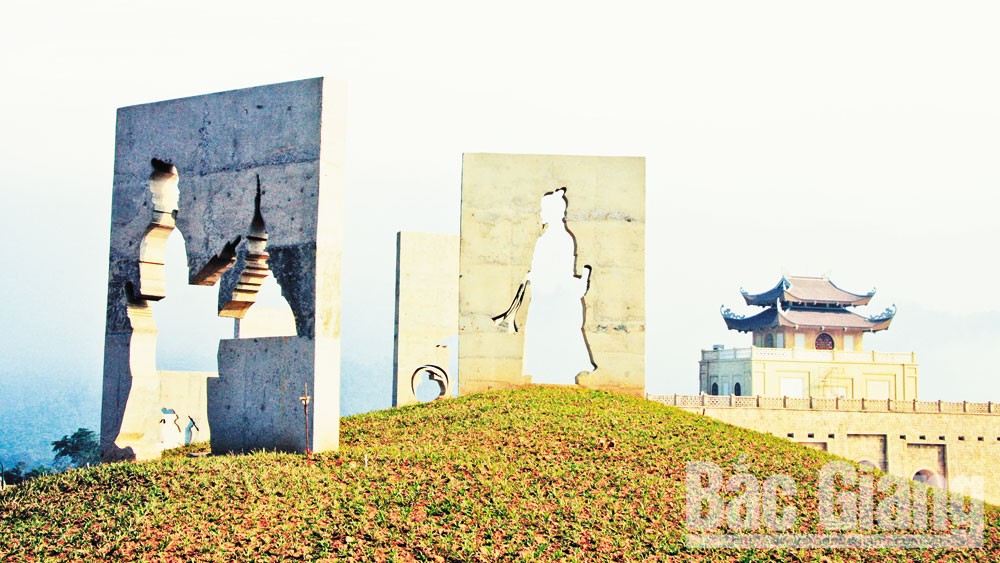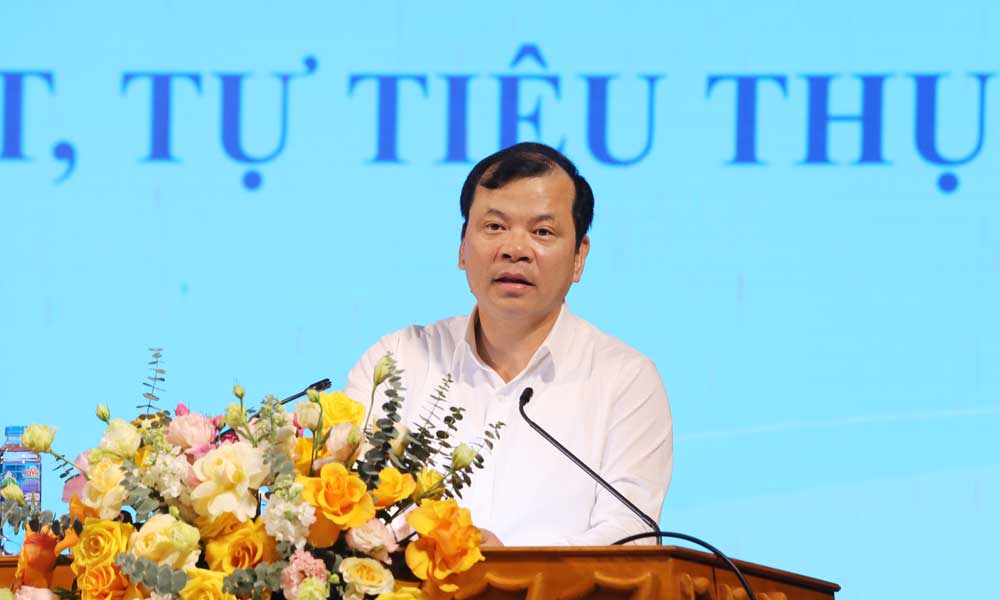Imprints of Buddhist Emperor Tran Nhan Tong on the side of Yen Tu Mountain
Perhaps the Yen Tu forest and mountainous area has many interesting landscapes and is not far from the capital, with convenient waterways, so from the early years of the independence era, the Ly dynasty paid attention to the land on the western side of Yen Tu Mountain to apply major policies, build pagodas and towers to worship the Buddha along the two banks of the Luc River.
 |
|
Empty paintings reenact the enlightenment process of King-Monk Tran Nhan Tong in the Tay Yen Tu spiritual-ecological tourist area. |
The western part of Yen Tu became a sacred Buddhist land and a bustling place from the end of the 13th century as the kings of the early Tran dynasty who admired Buddhism, in turn, came to Yen Tu to study the religion. In particular, for Buddhist Emperor Tran Nhan Tong, after two times leading the army and people to drive the Mongol-Yuan invaders away from the Dai Viet (Great Viet) territory, actively restored the country and made the nation of Dai Viet flourish, while doing a good job of keeping diplomatic relations and peace with the northern royal court. Then he ceded the throne to his son and came to Yen Tu Mountain to practice the religion.
After many times following the Great Dhuta, he took the Buddhist name of Giac
At Vinh Nghiem Pagoda (Yen Dung district), he and his two disciples, Zen Master Phap Loa Dong Kien Cuong, and Zen Master Huyen Quang Ly Dao Tai opened Buddhism training courses for monks and nuns. He ordered Zen Master Phap Loa to make a book recording the names of monks and nuns nationwide which was renewed in every three years, thus unifying Buddhist sects in the country into a sangha. The Sangha of the Truc Lam Yen Tu Buddhism was also the first Buddhist Sangha of Vietnam.
In addition to Vinh Nghiem Pagoda, which marks the imprints of the Buddhist Emperor, on the western side of Yen Tu Mountain Range, there are many places marking the Dharma spreading path of the King-Monk. Son Thap Pagoda is located in the lap of Long Thuyen Mountain, in Giap Son village, Cam Ly commune (Luc Nam district). So, Son Thap Pagoda was the first place where he practiced the religion after secretly leaving the capital for the mountain.
This event was probably the source of his Dharma development and expansion path in Tay Yen Tu later. In 1299, he left the Vu Lam royal step-over place (Ninh Binh province) to Yen Tu Mountain (Quang Ninh province) to practice the religion, taking the title of Huong Van Dai Dau Da (The Great Ascetic Monk). After founding the Truc Lam Yen Tu Buddhist sect and become a Buddhist leader of Dai Viet with the spirit of incarnation, he not only settled in Yen Tu but also regularly went to lecture on the Dharma and the ten things considered good by all beings in the whole country.
If Son Thap Pagoda is the first place where the Buddhist Emperor set foot in Yen Tu to practice the religion, Vinh Nghiem Pagoda is where he repeatedly delivered lectures on the Dharma and universal salvation. He had the credit of transmitting the Buddhist light to two excellent disciples namely Phap Loa Dong Kien Cuong and Huyen Quang Ly Dao Tai. Phap Loa was a Zen monk who continued to light up and develop the Dharma and build many pagodas on the western side of Yen Tu Mountain in Bac Giang province today.
Phap Loa’s building of many temples and pagodas in Tay Yen Tu such as Ho Bac Pagoda (Nghia Phuong commune), Bat Nha Pagoda (Huyen Son commune), Ma Yen Pagoda (Bac Lung commune), Cao and Kham Lang Pagodas (Kham Lang commune ), and Nhan Thap Pagoda (Tien Nha commune) was the inheritance of the Kink-Monk’s Dharma spreading path.
The Dharma spreading the path of the Buddhist Emperor as well as places where he delivered lectures on the Dharma and universal salvation with the ten goods things were gradually re-enacted and invested into key cultural tourism sites. Localities in Eastern and Western Yen Tu (Quang Ninh, Hai Duong, Bac Giang) have linked up to awake the potential and promote the value of King-Monk Tran Nhan Tong's legacy for mutual development.
And the Tay Yen Tu spiritual-cultural tourism road associated with the Dharma spreading path of the Buddhist Emperor is completely located in Bac Giang province. This is the way that has been formed and existed for centuries. It is associated with the birth and development of the Truc Lam Yen Tu Buddhist sect.
On that road, Vinh Nghiem Pagoda is considered the starting point for the most interesting trips because this place worships the Buddha and the three founders of the Truc Lam Yen Tu Buddhist sect. It also preserves the special documentary heritages of the Truc Lam Yen Tu Buddhist sect, which now become documentary heritages of mankind.
From here, pilgrims follow the spiritual path to the Tay Yen Tu spiritual-ecological tourist area in Dong Thong (Son Dong district). The tourist area was established as a result of creativity in tapping the cultural and spiritual potential in combination with the magical beauty of the local ecological environment, which will satisfy tourists from all walks of life this spring.
Dr. Nguyen Van Phong
 Bắc giang
Bắc giang















Reader's comments (0)